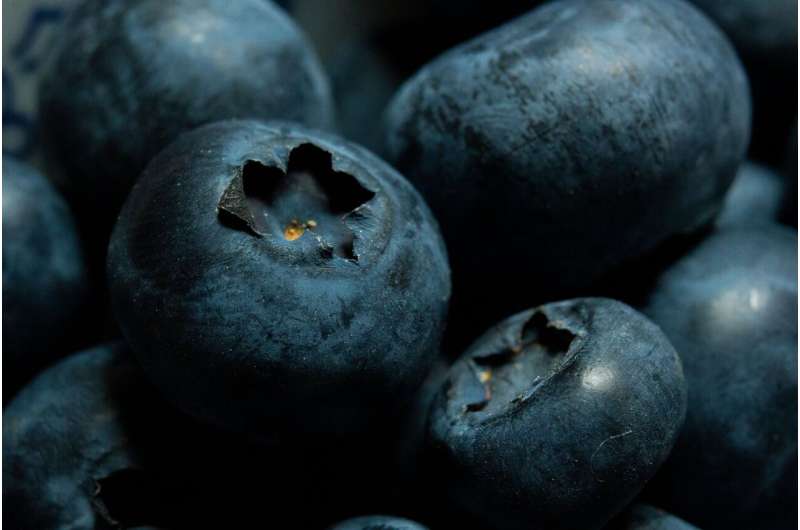This article has been reviewed according to Science X's editorial process and policies. Editors have highlighted the following attributes while ensuring the content's credibility:
fact-checked
trusted source
proofread
Climate change and forest management may threaten blueberry microbes

The diversity of symbiotic microbes in blueberries differs between southern and northern Finland, according to a new study published in Environmental Microbiome.
"The study suggests that climate change and intensive forestry practices can change the diversity of symbiotic microbes in the fruits of blueberry, which in turn may affect, for example, the taste or shelf life of the fruits," says University of Oulu Professor Anna Maria Pirttilä.
Bilberry, or European Blueberry (Vaccinium myrtillus L.) is one of the most economically important wild forest berries in northern Europe, and lately the berries have been the subject of increasing research. However, the knowledge on microbes living in the fruit, and the berries in particular, is still in its infancy.
"Symbiotic microbes can play an important role in the formation of health-promoting compounds in berries. Specifically, the accumulation of symbiotic microbes in berries, and the factors that determine their diversity, are poorly understood," says Kaisa Lehosmaa, Postdoctoral Researcher at the University of Oulu.
According to the study, several factors, such as the weather conditions during the growing season, influence both microbial diversity and community structure. Climate change may therefore have multiple effects on the coexistence of wild berries and their microbes. The current research on symbiotic microbes focused on fungal endophytes in particular.
The study investigated the influence of climatic regions and their weather conditions (temperature, rainfall) during the growing season and soil properties (pH, nutrients) on blueberry endophytic communities in southern and northern Finland.
In summary, the researchers conclude that the diversity and compositional structure of blueberry fruit endophytes follow similar patterns to those generally observed in plant leaves. They are shaped by different environmental factors, such as climate and the diversity of the surrounding forest vegetation, and these changes affect the symbiotic microbes also in blueberry.
In their recent study, Phuong Nguyen, Doctoral Researcher at the University of Oulu, Kaisa Lehosmaa and Anna Maria Pirttilä and their colleagues show that the abundance of the genera Venturia, Cladosporium and Podosphaera is different in blueberries from southern and northern Finland. Specifically, Venturia is common in northern Finland, while Cladosporium is typical in southern Finland.
More information: Minh-Phuong Nguyen et al, Weather in two climatic regions shapes the diversity and drives the structure of fungal endophytic community of bilberry (Vaccinium myrtillus L.) fruit, Environmental Microbiome (2024). DOI: 10.1186/s40793-024-00551-y
Provided by University of Oulu



















